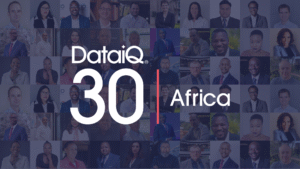In this Myth versus Reality of Data Lineage infographic, we capture the common misconceptions about data lineage that data governance leaders are grappling with, and practical resolutions to keep moving forward.
Download Myth vs. Reality of Data Lineage Infographic
1. Focus on what matters
The first myth to fall is that “lineage means mapping everything.” In practice, mapping every field across every system creates a dense web that quickly becomes unmaintainable. Leading teams instead focus on the 100–200 critical attributes that drive business value; the data that underpins regulatory reports, risk models, or key customer metrics.
2. Fix forward, don’t backfill
Another shift in mindset: lineage no longer starts with legacy systems. Modern data offices “fix forward” — embedding lineage capture directly in new cloud and lakehouse platforms, while only backfilling legacy systems when regulations or audits demand it.
This approach saves months of resource and ensures that lineage grows naturally as new pipelines are built.
3. Treat lineage as engineering, not administration
Traditional governance teams have often been tasked with manually documenting lineage after delivery. Mature organisations flip that model: lineage is captured automatically as part of the engineering process, just like test plans or deployment logs.
Governance becomes the consumer of lineage, not the producer, focusing on interpreting and applying the insights rather than chasing spreadsheets.
4. Make it usable for everyone
A common mistake is to produce dense, technical lineage maps that only a data engineer can read. High-performing teams design lineage views that are interpretable by business, compliance, and audit stakeholders alike.
When auditors can see exactly how a regulatory figure was produced, or when a business lead can trace a customer outcome back to the data source, lineage stops being a governance artefact and starts becoming part of business dialogue.
5. Apply risk-based depth
Field-level lineage does have its place but only where risk, regulation or operational impact justify it. Most use cases are served perfectly well by high-level lineage that connects systems, entities and transformations.
The goal is proportionality: go deep only when it truly matters.
6. Communicate value of lineage, not control
Lineage programmes that succeed don’t sell “compliance” — they sell confidence. Framing lineage as an enabler of trusted reporting, faster root-cause analysis, and smoother customer journeys changes how it’s perceived across the business.
It’s not about policing the data landscape but about giving everyone a map they can use.
7. Experiment, but with caution
AI-assisted lineage tools are starting to make their way into large enterprises. Many teams are testing LLMs for metadata extraction and dependency mapping, but the advice from peers to proceed with curiosity, not blind faith. Validate outputs carefully, and use AI to augment, not automate, accountability.
Through our peer-to-peer network, benchmarking solutions, and recognition programmes — including the DataIQ 100, DataIQ Awards and the new DataIQ 30 Africa — we equips leaders with the intelligence, connections and credibility they need to turn data and AI into real business value. You can find out more about our services here: What we do – DataIQ and by joining us at our upcoming World Congress 4-5 November 2025.





